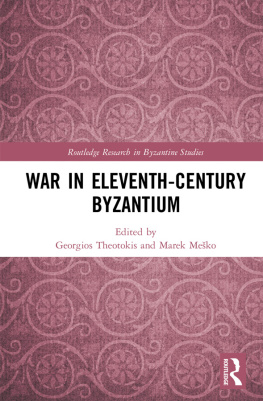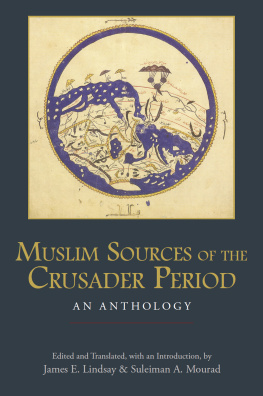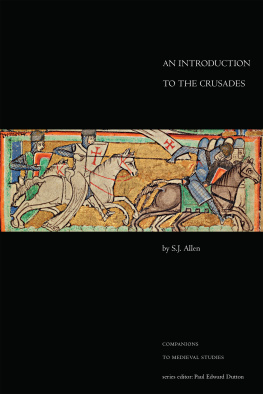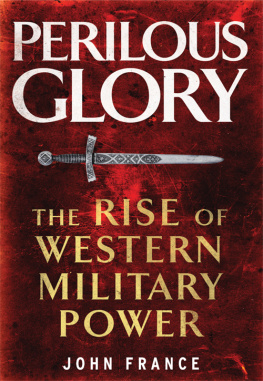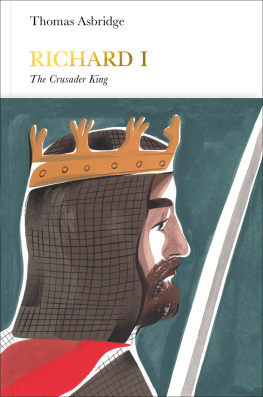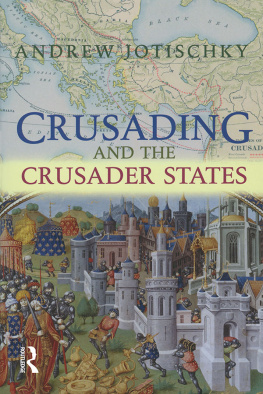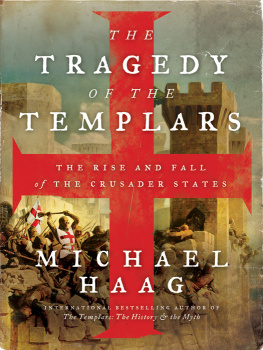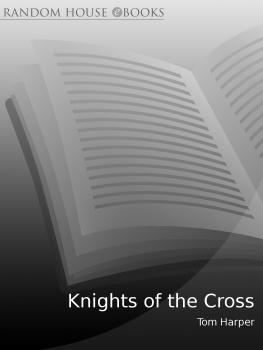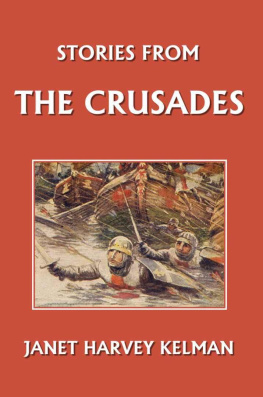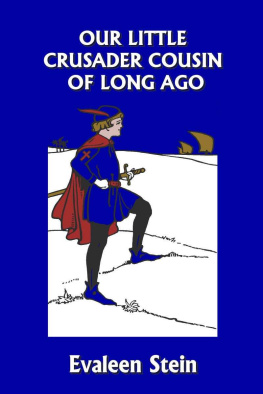Bohemond of Taranto
Bohemond of Taranto
Crusader and Conqueror
Georgios Theotokis
First published in Great Britain in 2020 by
PEN & SWORD MILITARY
An imprint of Pen & Sword Books Ltd
Yorkshire Philadelphia
Copyright Georgios Theotokis, 2020
ISBN 978-1-52674-428-9
ePUB ISBN 978-1-5267-4429-6
Mobi ISBN 978-1-5267-4430-2
The right of Georgios Theotokis to be identified as the author of this work has been asserted by him in accordance with the Copyright, Designs and Patents Act 1988.
A CIP catalogue record for this book is available from the British Library.
All rights reserved. No part of this book may be reproduced or transmitted in any form or by any means, electronic or mechanical including photocopying, recording or by any information storage and retrieval system, without permission from the Publisher in writing.
Pen & Sword Books Ltd incorporates the Imprints of Aviation, Atlas, Family History, Fiction, Maritime, Military, Discovery, Politics, History, Archaeology, Select, Wharncliffe Local History, Wharncliffe True Crime, Military Classics, Wharncliffe Transport, Leo Cooper, The Praetorian Press, Remember When, White Owl, Seaforth Publishing and Frontline Publishing.
For a complete list of Pen & Sword titles please contact
PEN & SWORD BOOKS LTD
47 Church Street, Barnsley, South Yorkshire, S70 2AS, England
E-mail:
Website: www.pen-and-sword.co.uk
or
PEN & SWORD BOOKS
1950 Lawrence Rd, Havertown, PA 19083, USA
E-mail:
Website: www.penandswordbooks.com
To my Brigita for ever
List of Maps
List of Plates
Archangel Michael and Joshua, Church of St George Diasorites, Naxos island, southern Aegean Sea. A rare surviving example of a cross-in-square type of Byzantine church built and decorated in the second half of the eleventh century (probably in the early Komnenian period).
St George and St Demetrius, Church of St Anargyroi, Kastoria, western Macedonia, c . 116080, depicted as typical mid-twelfth-century Byzantine cavalry officers.
Joshua, monastery of St Lucas in Veotea, central Greece, twelfth century, depicted as a Byzantine infantry soldier.
Battle scene between units of Byzantine and Arab cavalry from an illuminated manuscript, the Madrid Skylitzes, twelfth century.
Bohemond and Patriarch Daimbert of Pisa on their way to the Holy Land.
Battle scenes depicting Norman soldiers, Church of St Nicolas in Bari, eleventh century.
Mount Demirkazik (3,756m) in the Aladaglar mountains, Nide Province, Turkey, part of the formidable Taurus mountains separating Anatolia from Upper Mesopotamia and Syria.
Aerial view of the castle of St George in Kephalonia, Ionian Sea, which was built by the Byzantines in the eleventh century.
The Via Egnatia in the river valley of the Skhumbi, resurfaced by the Italian military in 1940.
The medieval walls of Dyrrachium (modern Durrs).
The river Vjos upstream from Tepelen, Albania.
The mausoleum of Bohemond in Canosa di Puglia.
The tower of Bohemond in the castle of Ioannina.
Castle of St Marco Argentano.
Roman caltrops.
The liberation of Bohemond from his captivity by the Danishmendits. Image from the illuminated manuscript, Matre du Roman de Fauvel, Libration de Bohmond, Li rommans de Godefroy de Buillon et de Salehadin et de tous lez autres roys qui ont est outre mer jusques a saint Loys qui darrenierem (BnF 22495).
Introduction
We were sprung from poor and obscure parents, and leaving the barren fields of the Cotentin and homes ill supplied with the means of existence, we set out for Rome, and it was not without great difficulty and much alarm that we passed beyond that place. Afterwards, by Gods aid, we got possession of many great cities.
[Orderic Vitalis, Ecclesiastical History , vol. II, p. 369]
The Aims and Scope of the Book
Bohemond of Taranto was a man of boundless ambition and inexhaustible energy; he was, in the words of Romuald of Salerno, always seeking the impossible. If he failed, however, to conquer the Byzantine empire and establish his own great eastern empire, he did succeed in founding the most enduring of all the states in the Latin East. He proved to be one of the most remarkable warriors in medieval Mediterranean history, coming from a family of soldiers of fortune, the Hautevilles, who managed to establish a powerful principality in Italy and seriously threaten the Byzantine empires very existence.
Remarkably very few monographs have been devoted to this chevalier daventure (Jean Flori) and Ralph Yewdale published the only one in English more than a century ago, in 1917. Since then, Jean Flori has published a modern, although dense and difficult to read, examination of Bohemonds life and career in French. This was supplemented, in 2008, by an updated and compelling biography of the Norman in Italian by Luigi Russo. Yet the aim of this book is to write about the great son of Guiscard as a warrior in a sense, minimising his political and diplomatic machinations or his contribution to the holy war in the Middle East and focusing instead on his military achievements in Italy, Sicily, the Balkans, Anatolia and the Middle East.
Bohemond was famous for being one of the most experienced officers in the crusader army and the undisputed leader because he knew the enemy. He had fought in Italy and Sicily against the local Lombard and Arab levies, while he was the second-in-command (later to become the leader) of the Norman armies that invaded Byzantine Illyria twice in three decades to face the multi-cultural armies of the Byzantine emperor Alexios Komnenos, comprising Greek, Armenian and Turkish troops. Therefore, because medieval commanders have in general received little credit for their strategic understanding, I want to focus on Bohemonds career as:
a strategist : analysing his war-plans in different operational theatres (Italy, Balkans, Middle East) and examining which strategy he follows annihilation, exhaustion or attrition? I will attempt to elucidate the degree to which one can characterise the Norman and more specifically Bohemonds strategies in Italy, Sicily and the Balkans as Vegetian.
a tactician : studying Bohemonds deployment and employment of troops in actual fighting against different enemies in different operational theatres. How well does he adapt his battle-tactics to those of the enemy? How well does he know the enemy (reconnaissance, diplomacy, espionage, etc.)? How suitable were these tactics for the warfare in each region?
a trans-cultural warrior : How typical a Norman warrior was Bohemond? While the many cultures of war that emerged in the medieval world shared some basic characteristics, what is more broadly comparable are the processes or dynamics that shaped military cultures around the world. More specifically, in this monograph I will explore those dynamics and the cultural patterns they produced by focusing on Bohemonds military career in regions that were hotly contested in the Middle Ages the Italian Peninsula, Sicily and the opposite Adriatic coast, and the Middle East.
The Norman Expansion out of Normandy
In his monumental The Making of Europe , Robert Bartlett wrote, one of the more striking aspects of the expansionary activity of the tenth to thirteenth centuries was the movement of western European aristocrats from their homelands into new areas where they settled and, if successful, augmented their fortunes. He was referring to the medieval aristocratic expansion from the core of Europes old Carolingian lands into its periphery eastern and southern Europe and, of course, the Middle East. Men of Norman descent became lords in England, Wales, Scotland and Ireland, in southern Italy and Sicily, in Spain and Syria. One Norman adventurer became lord of Tarragona and a Poitevin family attained the crown of Cyprus.


